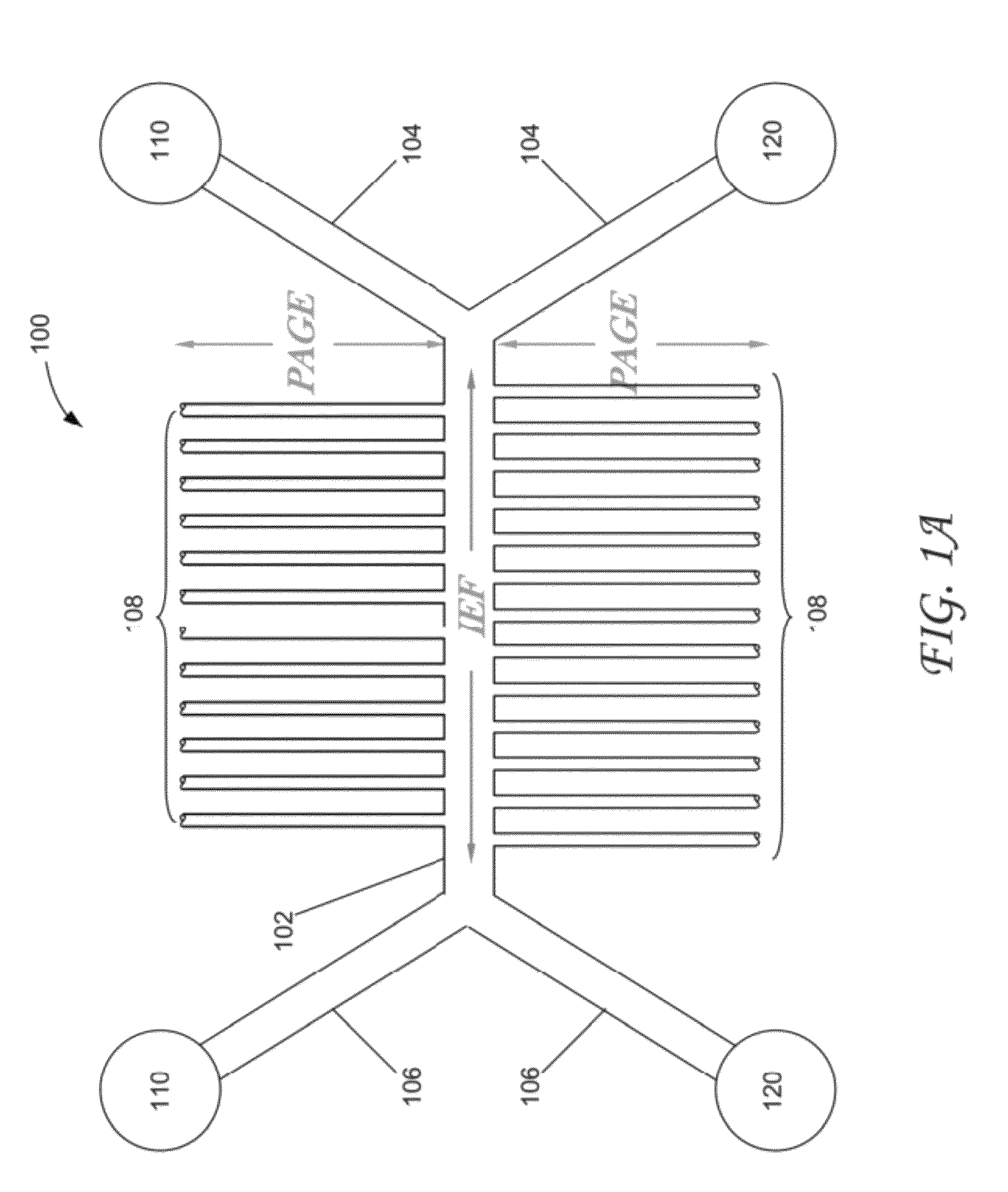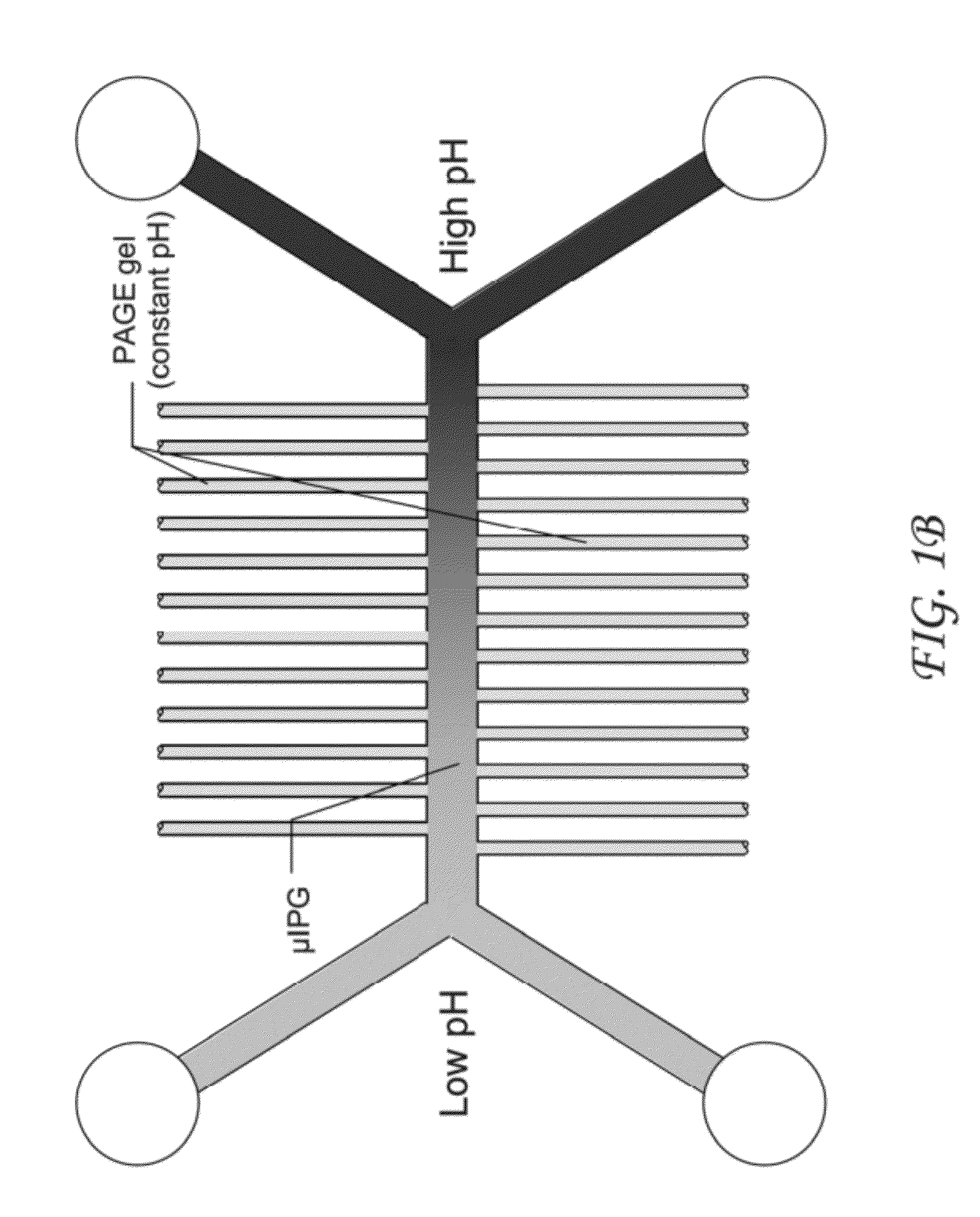Microfluidic device having an immobilized pH gradient and PAGE gels for protein separation and analysis
a microfluidic device and gradient technology, applied in the field of integrated, miniaturized 2d ief/page analysis devices, can solve the problems of inability to achieve a complete 2-d analysis in less than 36 hours, and inability to achieve a gradient in such a microfluidic device, and achieve the effect of gels, and reducing the number of gels
- Summary
- Abstract
- Description
- Claims
- Application Information
AI Technical Summary
Benefits of technology
Problems solved by technology
Method used
Image
Examples
Embodiment Construction
[0028]The microchannel configuration of the present device 100 is depicted below in FIGS. 1A and 1B. The 2-D geometry is etched into a glass microchip substrate using standard lithography techniques. The general chip geometry is shown in FIG. 1A and is comprised of a central microchannel 102, having two canted or “flanking” loading microchannels 104, 106, located at either end of central microchannel 102, and a plurality of smaller side microchannels 108, each intersecting central microchannel 102 along its length and opening into it. Furthermore, while only reservoirs 110 and 120 are associated with central microchannel 102 are shown, each of side microchannels 108 is also connected with a similar reservoir (not shown) to enable convenient introduction of reagents and test samples. Additionally, devices can be made such that each set of intersecting side microchannels on either side of the central microchannel are supplied by the same reservoir, such that an equivalent electric fie...
PUM
 Login to View More
Login to View More Abstract
Description
Claims
Application Information
 Login to View More
Login to View More - R&D
- Intellectual Property
- Life Sciences
- Materials
- Tech Scout
- Unparalleled Data Quality
- Higher Quality Content
- 60% Fewer Hallucinations
Browse by: Latest US Patents, China's latest patents, Technical Efficacy Thesaurus, Application Domain, Technology Topic, Popular Technical Reports.
© 2025 PatSnap. All rights reserved.Legal|Privacy policy|Modern Slavery Act Transparency Statement|Sitemap|About US| Contact US: help@patsnap.com



